Orioles are striking songbirds with vivid colors that can be found all over North America.
Orioles are frequently referred to as being “flame-colored” because of their stunning, vivid yellow and orange plumage.
These fascinating birds make their nests out of hanging baskets and eat fruit, insects, and nectar.
Orioles are among the fascinating recurring visitors to North America, but they are despised by fruit farmers and adored by birdwatchers.
These blackbird family members frequently resemble tropical birds of paradise because of their remarkable orange and yellow coloring.
This list will assist you in recognizing different species of Orioles north of the Mexican border, i.e., in North America, and includes some of the most colorful garden visitors.
| Image | Name |
|---|---|
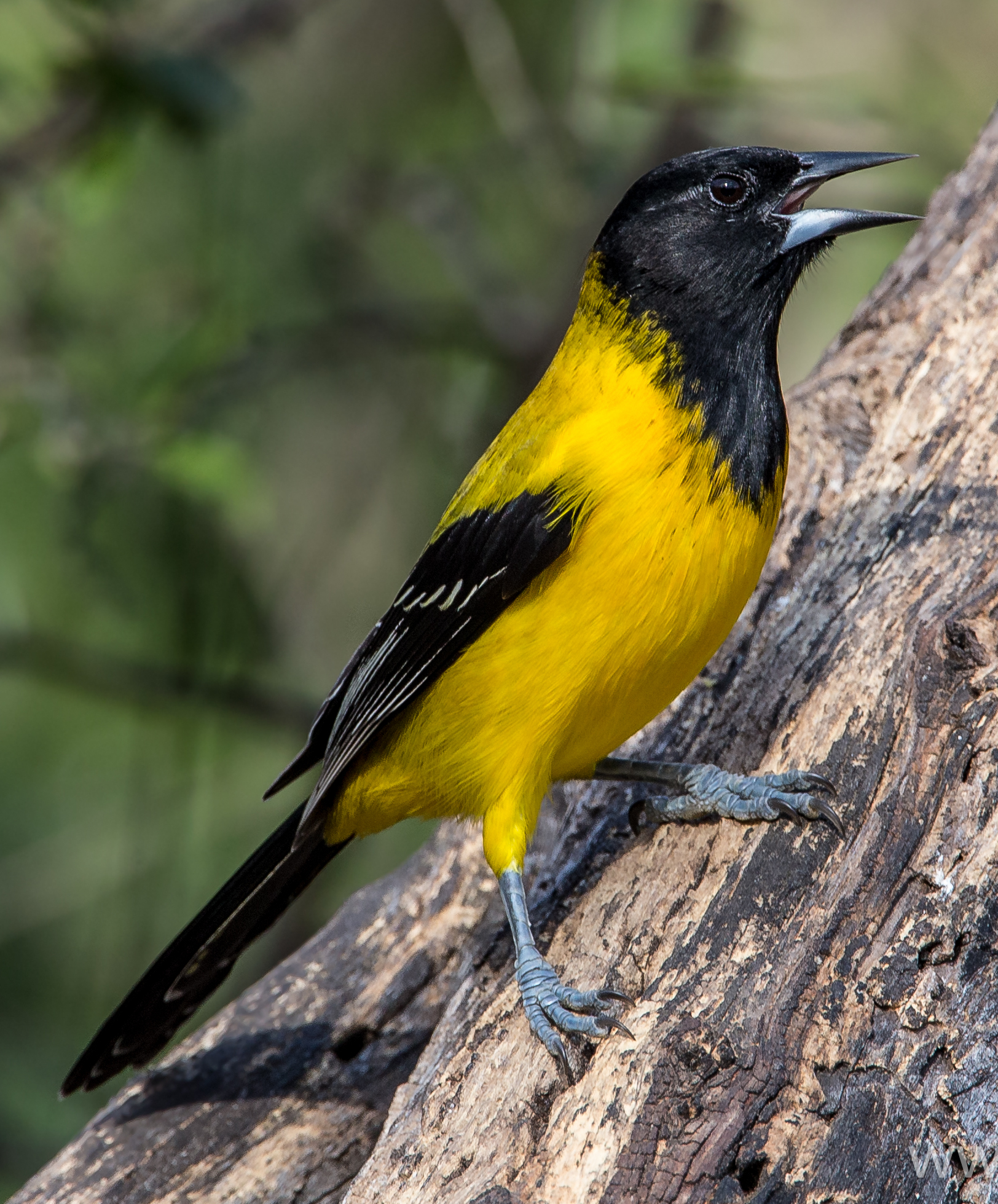 | Audubon’s Oriole |
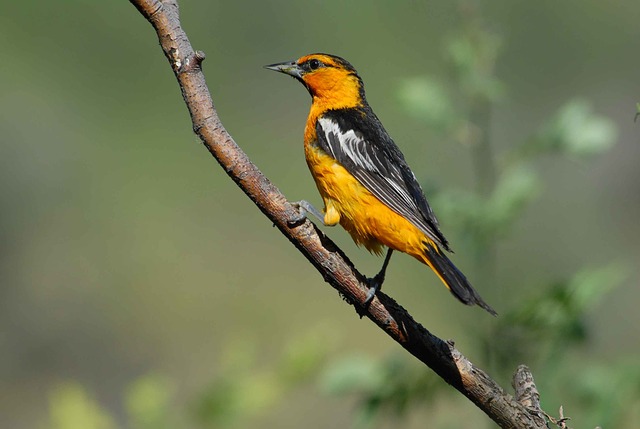 | Bullock’s Oriole |
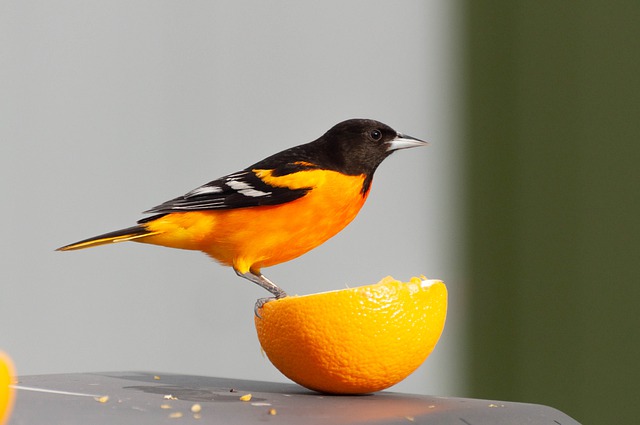 | Baltimore Oriole |
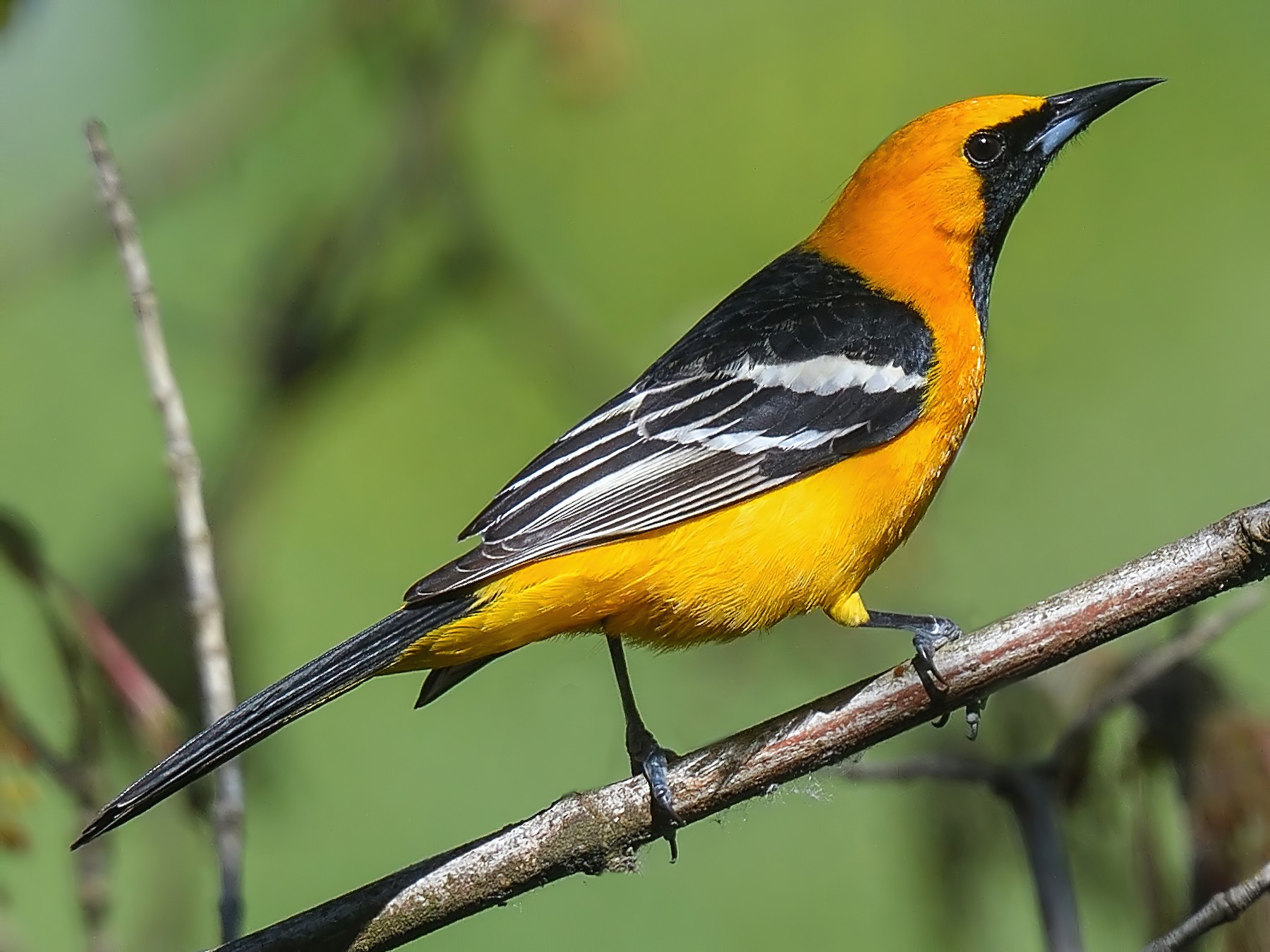 | Hooded Oriole |
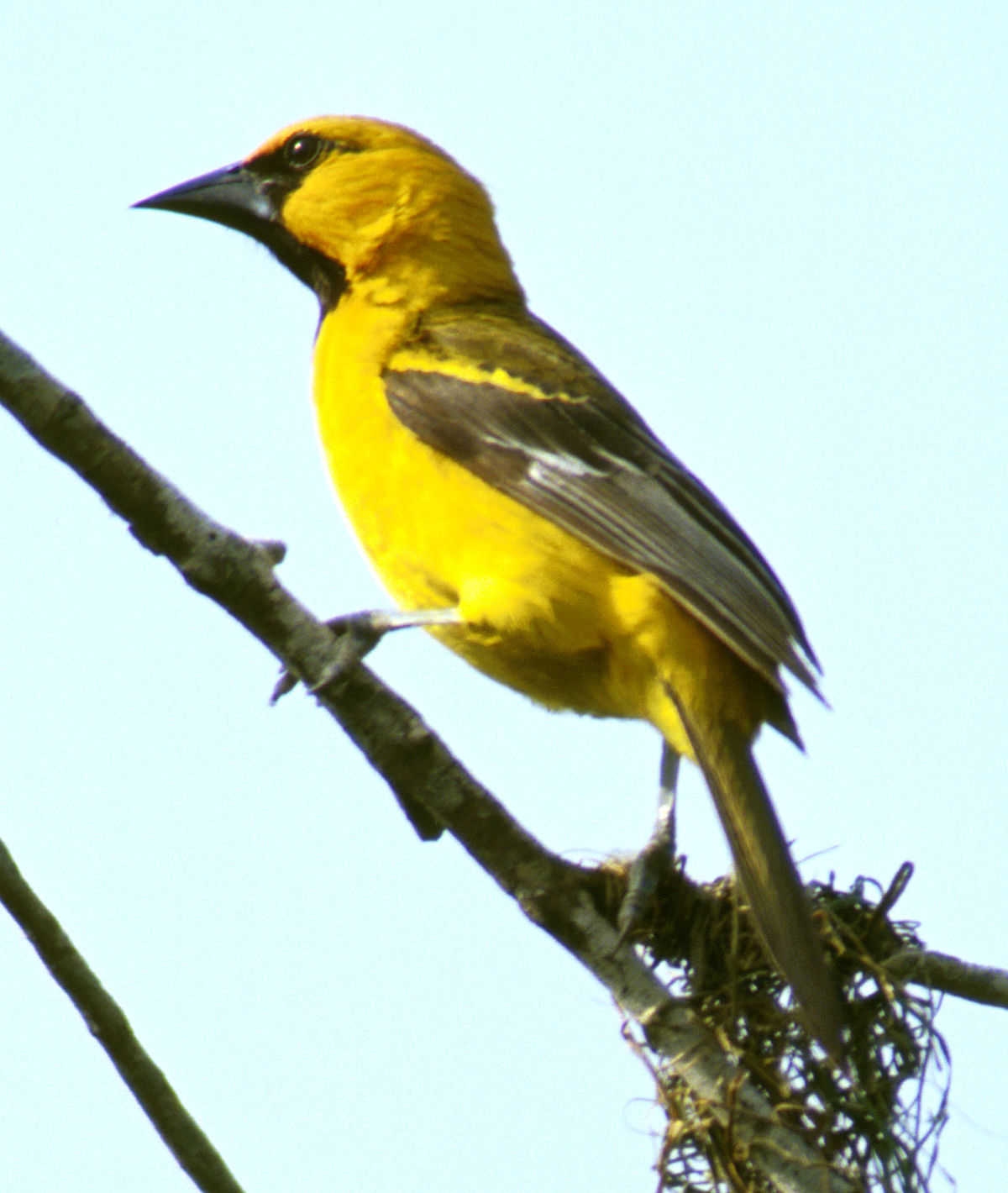 | Altamira Oriole |
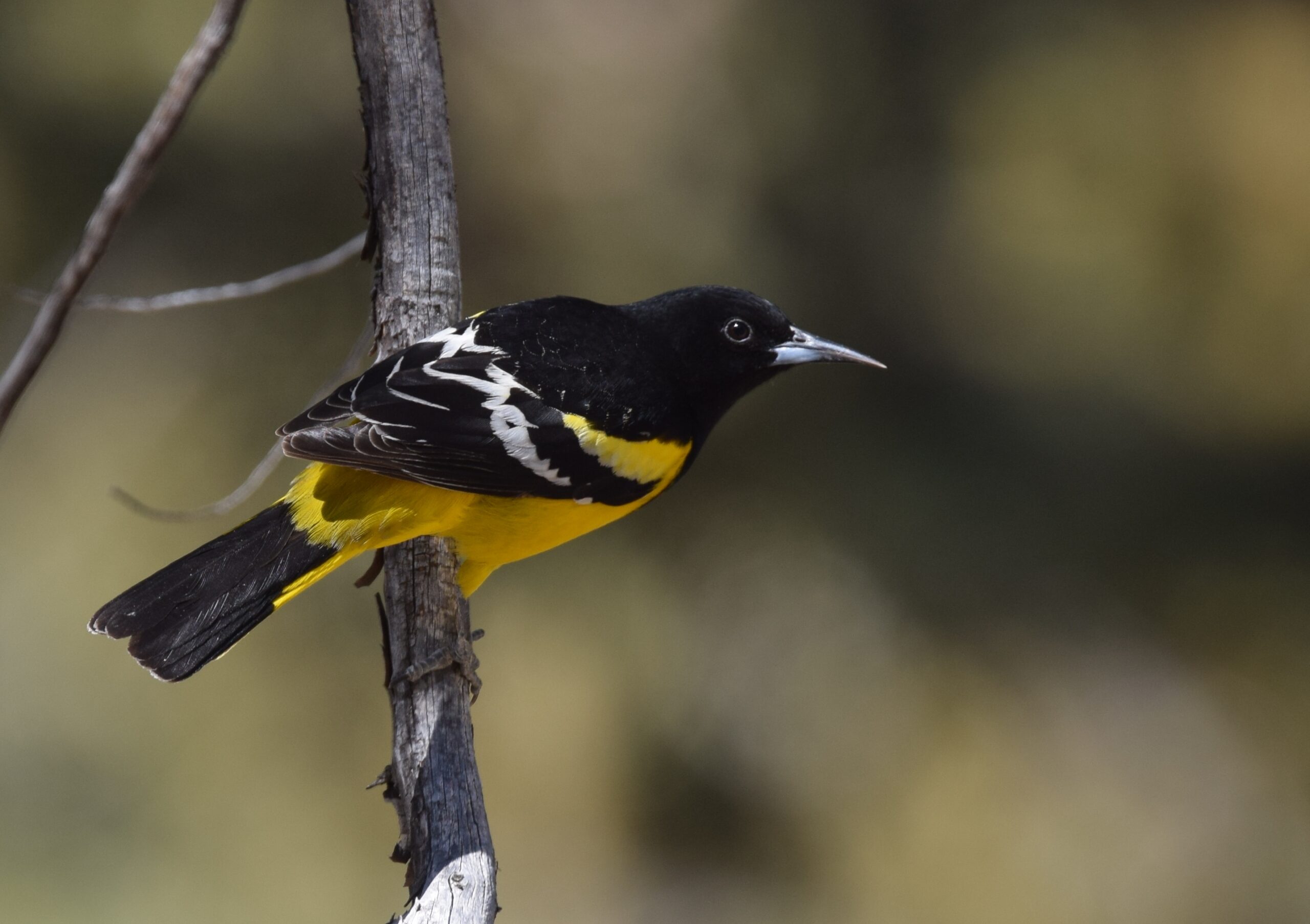 | Scott’s Oriole |
 | Orchard Oriole |
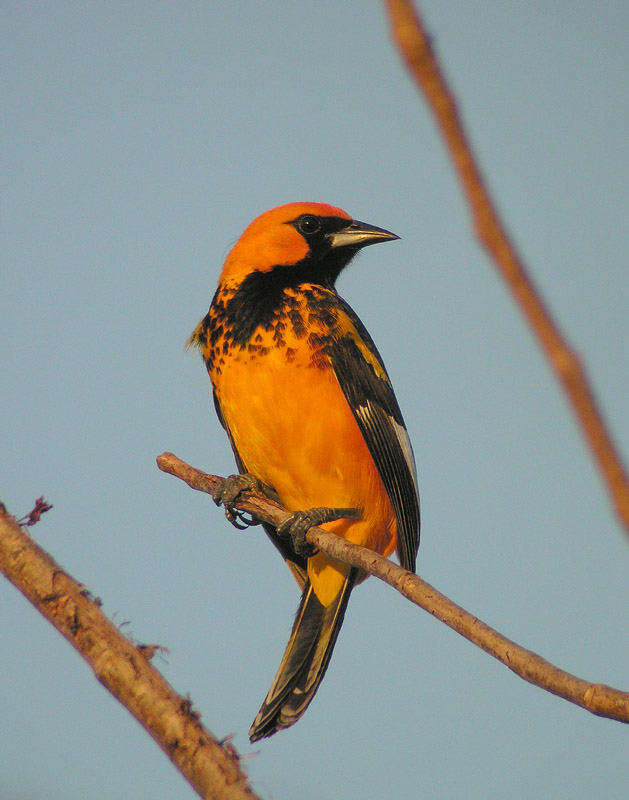 | Spot-Breasted Oriole |
Types of Orioles in North America
1. Audubon’s Oriole

Mexico and sections of southern Texas are the native habitats of the Audubon’s oriole. It’s unusual for orioles to have identical plumage on the males and females.
Their head, wings, and tail are all black, and their body is lemon yellow. Songs are also performed by both sexes, particularly during the mating season.
These wide forests typical of these regions are home to these insect-eating orioles. In dense tropical and semitropical forests, they prefer to collect insects from leaves and branches. Despite their vivid hue, they are often disguised by dense undergrowth.
Color Pattern
Adults have vivid yellow and dark colors. The males’ plumage is only a little more colorful than the females. Juveniles have duller yellow bellies, olive-yellow heads, greenbacks, and dark wings and tails.
Behavior
Forages seek fruit and insects in areas of deep cover and occasionally on the ground. Additionally, the bill is inserted into the foliage to wiggle open crevices and reveal insect larvae (known as “gaping”).
Nests and frequently sings in places hidden by thick vegetation. Visits backyard feeders occasionally.
Habitat
Audubon’s Orioles are common in Texas, where they can be found in mesquite bosques, forested streams, and occasionally oak stands.
They may be found in ravines, creeks, or patches of phragmites or willows. They frequently show up in lush backyards with bird feeders, especially when a suitable nesting location is close by.
Audubon’s Orioles spend more time foraging in dense foliage than other orioles do, and they also bury their nests deeper in heavy cover than many other oriole species do while being frequently spotted along forest margins.
2. Bullock’s Oriole

The Bullock’s Oriole wingspan is 12.2 inches, and they range in height from 6.7 to 7.5 inches (17 to 19.1 centimeters) (30.1 cm). They only weigh between one and five ounces (28.3 to 42.5 grams).
The flame-orange torso and face of the colorful males serve as distinguishing features. Look for a noticeably pointed beak and a black cap and throat. Both the male and female Bullock’s wings will have white streaks running the length of them.
The females are blander than most others on the list. Their body is a duller shade of orange-yellow and lacks the same dramatic black coloring as the males.
Watch out for sounds emanating from the trees that resemble a dog’s squeaky toy. These brief, rich squeaks that are broken up by quick rattles are heard in The Bullock’s Oriole’s song.
The most prevalent oriole in western America behaves similarly to its counterpart in the east. During the breeding season, Bullock will live in the open woodlands like a Baltimore Oriole.
Following their winter migration, they head south to Mexico and are rarely spotted in the desert’s northern reaches.
Although it will eat food, the Bullock’s Oriole likes to consume insects, particularly grasshoppers. Bullocks are sociable and will approach a feeder of sugar and water. These birds might be attracted by placing anything as simple as nectarine on the tree trunk.
The Bullock’s Oriole, like many other species, is well known for making nests. In the tiny branches of trees, females weave elaborate nests in the form of gourds. To protect the hatch, these pods can be an amazing 15 inches deep.
Color Pattern
Bright orange adult males with a black back and a sizable white wing patch. The head and tail of females and immatures are yellowish-orange, and they have a greyish back and wing coverts with white edges.
Male juveniles have a black patch on their throat.
Behavior
Bullock’s Orioles consume fruit or nectar in addition to capturing caterpillars in the delicate branches of trees and shrubs. Being quick and nimble, they frequently hang upside down or stretch to catch prey.
Habitat
Look for them in areas of open forest near streams, especially in cottonwood groves. In addition, they can be found in parks, oak or mesquite woodlands, and orchards.
3. Baltimore Oriole

The adult males have black wings with white wing bands and brilliant orange and black coloring.
Females have a brownish-yellow back, grayish-brown wings, and a yellowish underside and head.
Breeding begins in April in the Eastern and Central States, as well as in the Central and Southern Provinces of Canada and along the Southern US Border.
They weave beautiful hanging nests that resemble bags out of fibers.
Try placing oranges that have been chopped in half on a platform feeder or hanging from trees to draw more Baltimore Orioles to your yard.
Include sugar water-filled oriole feeders. Plant fruit and nectar-producing plants like trumpet vines, crab apples, and raspberries.
Color Pattern
Adult males have a full black head, a flame-orange body, and black wings with one white band. Females and immature males have two distinct white wing bars and yellow-orange breasts. Their heads and backs are brownish.
Behavior
They might be visible from lower down, feeding on hummingbird feeders or gathering fruit from shrubs and vines. Listen for the male’s distinctive wink or chatter cries and keep an eye out for his leisurely, fluttering flights between treetops.
Habitat
Baltimore Orioles are found in open woods, the edges of forests, orchards, and stands of trees near rivers, parks, and backyards. They are not typically found in deep forests.
4. Hooded Oriole

Compared to many other oriole species, the hooded oriole has a longer and slimmer body. Males have yellow to orange bodies, black patches that run from their faces down to their chests, and black and white wings. Females have grey wings and an all-over color of olive-yellow.
They create a suspended net-like basket out of plants and grasses rather than a nest on top of a limb or leaf. Because they suspend these nest baskets from the underside of palm fronds, they are frequently referred to as “palm-leaf orioles.”
Coastal and southern California, southern Nevada, and portions of southern Arizona and New Mexico are among the summertime locations where hooded orioles can be seen. For the winter, they travel even further south to Mexico.
Color Pattern
The color of adult males ranges from brilliant yellow to fiery orange and is a beautiful black. They feature yellow to orange rumps, hoods, and bellies, as well as black tails, throats, and wings.
The black throat extends down the chest to form a bib, and up the face to form a little mask around the eye. Male adults display white wing bars.
The overall color of females is olive-yellow, with grayer backs and narrow white wing bars. Young men have necks that are black but otherwise resemble females.
Behavior
Although hooded orioles are skilled hunters who frequently hang upside down while snatching their prey, they typically browse slowly amid leaves and branches. They fly directly through trees while maintaining a vigorous wingbeat.
Habitat
The habitat of hooded orioles is an open forest with sporadic trees like cottonwoods, willows, sycamores, and particularly palm trees.
5. Altamira Oriole

The largest Oriole in North America is the Altamira Oriole. Their wingspan is 14.2 inches, and they range in length from 8.3 to 9.1 inches (21.1 to 23.1 centimeters) (36.1 cm). Altamarias typically weigh 1.7 to 2.3 ounces (48.2 to 65.2 grams).
Altamiras are frequently mistaken for Hooded Orioles despite being much larger due to their similar coloring.
Their wings are a dark black color, but their body and head are a vivid orange. For identification, look for their recognizable small orange shoulder patch outside of their black mask.
The call of an Altamira is most frequently heard as a piercing “ike.” During the breeding season, when two birds are probably communicating, this sound is heard more frequently.
Pay attention to their chattering cry as well, particularly in between bursts of whistling that are like songbirds.
Not typical in many parts of the United States.
Being the largest Oriole necessitates building the largest nest; some of these woven pouches measure 2.5 feet long!
This welcoming backyard guest is the Altamira Oriole’s sweet taste. Your backyard will transform if you place fruits, hummingbird feeders, or flowers there.
Color Pattern
Adults have the brightest orange and black on their faces. They have orange shoulders, a white wingbar, black wings, a black back, a tail, and wings with black in front of the eye and on the chin.
Immatures lack the orange shoulder mark and have a yellowish-orange color with an olive-brown back. Juveniles lack wing patterns and dark face and chin markings and have a yellow head and body with an olive back.
Behavior
Takes small fruits, gathers insects and larvae from leaves and branches, occasionally from the ground, and ingests flower nectar while foraging.
Hops between trees and flies between them fast. Females construct 2-foot-long, pear-shaped nests that hang hanging from high branches, frequently above water.
Habitat
In sparsely wooded regions, parks, wildlife refuges, farms, orchards, thorn forests, and riparian areas, forages and build their nests.
6. Scott’s Oriole

The Scott’s oriole is a common bird in the dry Southwest and is not easy to miss. The male, which is lemon-yellow and black, approaches nectar feeders without hesitation.
The Scott’s oriole frequently nests in the comparatively small yucca plant, despite the fact that many orioles build their nests in very tall trees.
Additionally, it consumes the nectar from the yucca blooms and builds its nest using fibers collected from dead yucca plants.
From eastern California and northern Utah to the Hill Country of central Texas, Scott’s orioles can be found. They may thrive well in juniper or oak open forests.
However, they are particularly drawn to places with a high concentration of yucca plants, where they make their nests among the long, dagger-shaped leaves. Long distances are covered by the male Scott’s oriole’s rich, bubbling song.
Color Pattern
Male adults have a bright lemon-yellow underside and a velvety black exterior, with a black throat and chest. They feature a black and yellow tail, yellow shoulders, and white wing bars.
Adult females have weak wing bars, slight stippling on the head, and are dull yellow below and olive green above. Males under the age of one are called immature (year-old) males, and they have black faces, throats, and upper breasts. Female juveniles and immatures resemble adult females but are duller.
Behavior
forages by jumping into higher plants and looking for insects. It frequently stretches out and hangs upside down to look in crevices.
Also consumes floral nectar by sticking a bill right into a blossom. Occasional fruit eater. Sings or makes nasal noises while foraging in pairs or small family groups.
Habitat
Nests and forages on arid foothills and lower portions of mountains with pinyon pine, juniper, and live oak. It also forages upslope from cactus flats, where yuccas are common.
7. Orchard Oriole

Orchard orioles are smaller than other orioles and are common in the summer in the East and parts of the Southwest. In contrast to their orange and yellow counterparts, adult males have a distinctive color scheme of deep chestnut.
The orchard oriole is the smallest oriole in North America and is widespread in the Midwest and East. However, because it doesn’t frequently visit nectar feeders, you might not see it as frequently as the Baltimore oriole.
The orchard oriole arrives in the spring a little later than other orioles and occasionally migrates south as early as mid-July.
Color Pattern
Male adults are rich reddish-chestnut below and black above. Male juveniles resemble females, except they have black around their throats and bills.
Behavior
The tops of trees are where orchard orioles hunt for insects. In the autumn, they consume berries and other foods, as well as nectar from flowers. They occasionally go to hummingbird feeders and consume jelly or orange slices there.
Habitat
In the eastern United States and southern Canada, orchard orioles spend their summers in open forests and places with a few scattered trees. You can find them in parks and orchards, along river borders, and in fields with a few scattered trees.
8. Spot-Breasted Oriole

In the past, only Baltimore and orchard orioles would migrate through and spend the winter in southern Florida. However, some spot-breasted orioles, which are native to Central America and are occasionally kept as cage birds, escaped from captivity in the 1940s close to Miami.
They built up a community in the suburbs of southeast Florida. The males and females of this tropical species are identical.
You have a chance to view orioles in almost any place with all these options. With any luck, you might catch a glimpse of these golden birds just outside your window.
Color Pattern
The head and body are brilliant oranges. The face, bib, back, and tail are all in black. Breasts with black spots on the sides.
Behavior
They frequently visit backyards in search of fruit and nectar and reside in open woodlands.
Habitat
This species is indigenous to Central America; it was first noted there in 1949, likely as a result of escaped captives, and it has subsequently been discovered in a small area of southeast Florida, ranging from Homestead to Fort Lauderdale. Parks, suburbia, and gardens are preferred habitats.
Check out this article on What Do Orioles Eat?
Conclusion
In this article, you have learned about the eight types of Orioles that are found on the North American continent. Additionally, different features of the birds, including their color pattern, their behavior, and their habitat, have also been discussed, which may help you identify these eight amazing birds of North America.
FAQ
Do Orioles Return To The Same Location Each Year?
Because of their keen sense of home, Baltimore orioles frequently return year after year to build their nests in the same yard or even in the same tree.
The house wren, ruby-throated hummingbird, and rose-breasted grosbeak are additional typical garden birds that migrate back around the first of May.
What Distinguishes A Male From A Female Baltimore Oriole?
Adult males have black wings with one white bar and a full black head. They are also flame-orange in color. Females and immature males have two distinct white wing bars, a greyish head and back, and yellow-orange on the breast.
How Enduring Are Baltimore Orioles?
Although a few Baltimore Orioles persist in northern states and provinces, the majority of them live in tropical regions.
Nobody is sure why certain people are stragglers every year; since the majority of these are observed in November and December, ornithologists assume that most of them pass away as the winter becomes more severe.
Last Updated on March 22, 2023 by Lily Aldrin
